
A | B | C | D | E | F | G | H | CH | I | J | K | L | M | N | O | P | Q | R | S | T | U | V | W | X | Y | Z | 0 | 1 | 2 | 3 | 4 | 5 | 6 | 7 | 8 | 9
This article needs additional citations for verification. (December 2022) |

A public university or public college is a university or college that is owned by the state or receives significant funding from a government. Whether a national university is considered public varies from one country (or region) to another, largely depending on the specific education landscape. In contrast a private university is usually owned and operated by a private corporation (not-for-profit or for profit). Both types are often regulated, but to varying degrees, by the government.
Africa
Egypt

In Egypt, Al-Azhar University was founded in 970 AD as a madrasa; it formally became a public university in 1961 and is one of the oldest institutions of higher education in the world. In the 20th century, Egypt opened many other public universities with government-subsidized tuition fees, including Cairo University in 1908, Alexandria University in 1912, Assiut University in 1928, Ain Shams University in 1957, Helwan University in 1959, Beni-Suef University in 1963, Zagazig University in 1974, Benha University in 1976, and Suez Canal University in 1989.
Kenya
In Kenya, the Ministry of Education controls all public universities. Students enroll after completing a 8-4-4 educational program system and attaining a mark of C+ or above. Students who meet the criteria set annually by the Kenya Universities and Colleges Central Placement Service receive government sponsorship, with the government providing part of their university or college fees. Students are also eligible for a low-interest loan from the Higher Education Loan Board; students must pay back the loan after completing their higher education.
Nigeria
In Nigeria, both the federal and state governments may establish public universities.
South Africa

South Africa has 26 public universities which are members of Universities in South Africa.[1] These are categorized as traditional or comprehensive universities.
Tunisia
In Tunisia, the Ministry of Higher Education and Scientific Research controls public universities and guarantees admission to students who earn a Tunisian Baccalaureate. Using a state website, the students make a wish list of the universities they want to attend, with the highest-ranking students getting priority choices. Universities rank students according to the results of their baccalaureate.
Asia
Bangladesh
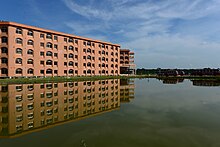
There are forty public universities in Bangladesh.[2] They are overseen by the University Grants Commission which was created by the government in 1973.
Brunei
Most universities in Brunei are public.
People's Republic of China
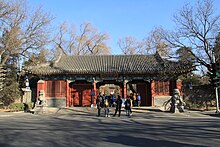
In the People's Republic of China, nearly all universities and research institutions are public. Typically, provincial governments run public universities. However, some are administered by municipal governments or are national, which the central government directly administers. Private undergraduate colleges exist but are primarily vocational colleges sponsored by private entities. Private universities usually cannot award bachelor's degrees. Public universities tend to enjoy a higher reputation domestically and globally.[3][4][5]
Hong Kong
The University Grants Committee funds eight public universities in Hong Kong. The Hong Kong Academy for Performing Arts also receives funding from the government. There are four self-financing universities, namely Hong Kong Metropolitan University, Hong Kong Shue Yan University, Hang Seng University of Hong Kong, and Saint Francis University.
India
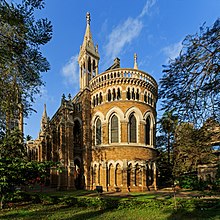
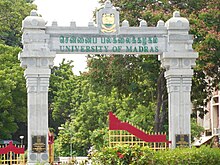
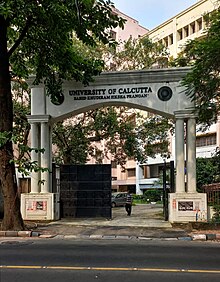
In India, most universities and nearly all research institutions are public. Some private undergraduate colleges exist but most are engineering schools that are affiliated with public universities. Private schools can be partially aided by the national or state governments. India also has an "open" public university, the Indira Gandhi National Open University which offers distance education. In terms of the number of enrolled students, is now the largest university in the world with over four million students.
Indonesia
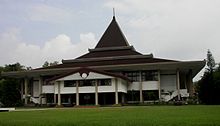
In Indonesia, the government supports public universities in each province. Funding comes through the Ministry of Education, Culture, Research, and Technology and the provincial and municipal governments.
Iran
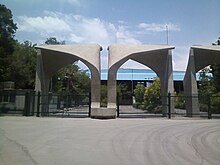
Some of the public universities in Iran offer tuition-free and tuition-based programs. State-run universities are highly selective and competitive.
Israel
There are nine official universities in Israel, a few dozen colleges, and about a dozen foreign university extensions. The Council for Higher Education in Israel supervises all of these institutions academically. Only a university, not a college, can issue doctorate degrees in Israel.
Japan
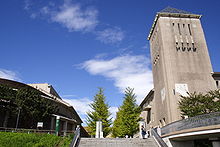
In Japan, public universities are run by local governments, either prefectural or municipal. According to the Ministry of Education, public universities have "provided an opportunity for higher education in a region and served the central role of intellectual and cultural base for the local community in the region" and are "expected to contribute to social, economical and cultural development in the region".[6] This contrasts with the research-oriented aspects of national universities.
In 2010, 127,872 students were attending 95 public universities, compared to 86 national universities and 597 private universities in Japan. Many public universities are relatively new; in 1980, there were only 34 public universities in Japan. Since July 2003, public universities may incorporate under the Local Independent Administrative Institutions Law.[7]
South Korea
In South Korea, most public universities are national. There are 29 national universities, eighteen special universities, and ten educational universities. In addition, there are two national colleges and the Korea National Open University which offers distance learning. The University of Seoul is a public municipal university.
Kyrgyzstan
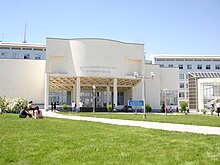
Manas University in Kyrgyzstan is a public higher education institution that offers associate degrees, undergraduate degrees, and graduate and postgraduate degrees.[8]
Macau
The University of Macau, Macao Polytechnic University, and Macao University of Tourism are the public universities in Macau.
Malaysia
There are twenty public universities in Malaysia, funded by the government but governed as self-managed institutions.
Nepal
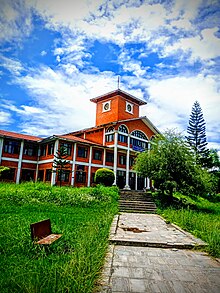
Tribhuvan University was the first public university in Nepal. It operates through six different institutes and is affiliated with various colleges. There are government-funded Purbanchal University and Pokhara University.
Pakistan

There are 107 public universities in Pakistan, compared to 76 private universities.[9] University of the Punjab is the biggest public university, followed by University of Karachi. The public universities receive guidance and recognition from the Higher Education Commission.
Philippines
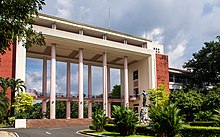
There are more than 500 public higher education institutions in the Philippines that are controlled and managed by the Commission on Higher Education. Of the 500, 436 are state colleges and universities, 31 local colleges and universities, and a handful of community colleges. In 2008, the Philippine Congress passed Republic Act 9500, declaring the University of the Philippines as the national university to distinguish it from all other state universities and colleges. Other notable public colleges and universities include the Polytechnic University of the Philippines, Technological University of the Philippines, Philippine Normal University, Batangas State University, and Mindanao State University.
Singapore

There are six autonomous public universities in Singapore, including National University of Singapore founded in 1905, Nanyang Technological University founded 1981, Singapore Management University founded in 2000, Singapore University of Technology and Design and Singapore Institute of Technology founded in 2009, and Singapore University of Social Sciences founded in 2017.
Sri Lankaedit
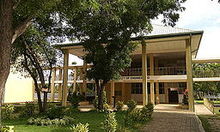
In Sri Lanka, there are seventeen public universities. Most public universities are funded by the government through the University Grants Commission, which handles undergraduate placements and staff appointments.[10] The top institutions include the University of Peradeniya founded in 1942 and the University of Colombo founded in 1921. Sri Lanka also has a joint service military university, the General Sir John Kotelawala Defence University, which is operated by the Ministry of Defence.
Taiwanedit

One-third of the 150 universities in Taiwan are public. Because the Taiwanese government provides funding to public universities, their students pay less than half the tuition fees of those at private universities. Ten public universities were established before the 1980s and are the most prestigious in Taiwan. As a result, most students choose public universities for their tertiary education.
Thailandedit
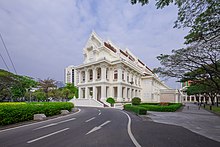
In the late 19th century Thailand, there was a high demand for professional talent by the central government. In 1899, the King founded the School for Training of Civil Officials near the northern gate of the royal palace. Graduates from the school became royal pages, a traditional entrance into the Mahattai Ministry or other government ministries. As of 2019, Thailand has nineteen public universities.
Vietnamedit
Europeedit

Austriaedit
In Austria, most universities are public. The state regulates tuition fees, making costs the same for all public universities. Except for some fields of study, notably medicine, all Austrians who pass the Matura exam have the right to attend any public university. Overenrolled degree programs have introduced additional entrance exams that students must pass in the first year or before starting the degree, especially with scientific subjects such as biology, chemistry, and physics. Private universities have existed since 1999 but are considered easier than public universities and thus hold less esteem.

Belgiumedit
All public universities in Belgium were operated under the legislation of the national government until higher education was moved to the control of the three communities in 1990. Consequently, the Flemish, the French, and the German communities determine which institutes of higher education organize and issue diplomas.
Until the 1970s, Belgium had two state universities: the University of Liège (ULiège) and the Ghent University (UGent), both founded in 1817. These are often referred to as the two historic state universities. In 1965, small specialized single-faculty public institutions were recognized as universities, including the Faculty of Veterinary Medicine and the Gembloux Agro-Bio Tech; both are now part of the University of Liège.
The Belgian state created smaller public universities that have since merged with larger institutions, including the public university at Mons in 1965 which became part of the University of Mons in 2009. The state-created university founded in Antwerp in 1971 is now part of University of Antwerp. Hasselt University started as a state-created public institution managed by the Province of Limburg. Similarly, the Province of Luxembourg managed the state-created public university in Arlon which became part of ULiège in 2004.
Since 1891, private universities have gradually become state-recognized and funded. Some private, mostly Catholic, organizations are called free institutions, as in administratively free from the state despite being state-funded. As of 2022, the communities fund all recognized universities, public and private, which follow the same rules and laws.

Croatiaedit
The state runs most public universities in Croatia. Students who perform well academically pay only administrative fees which are less than €100 per year. Students who fail multiple classes in a year must retake the courses and pay a partial or full tuition fee.

Denmarkedit
Almost all universities in Denmark are public and are held in higher esteem than their private counterparts. Danish students attend university for free.
Finlandedit
Zdroj:https://en.wikipedia.org?pojem=Public_research_universityText je dostupný za podmienok Creative Commons Attribution/Share-Alike License 3.0 Unported; prípadne za ďalších podmienok. Podrobnejšie informácie nájdete na stránke Podmienky použitia.
Antropológia
Aplikované vedy
Bibliometria
Dejiny vedy
Encyklopédie
Filozofia vedy
Forenzné vedy
Humanitné vedy
Knižničná veda
Kryogenika
Kryptológia
Kulturológia
Literárna veda
Medzidisciplinárne oblasti
Metódy kvantitatívnej analýzy
Metavedy
Metodika
Text je dostupný za podmienok Creative
Commons Attribution/Share-Alike License 3.0 Unported; prípadne za ďalších
podmienok.
Podrobnejšie informácie nájdete na stránke Podmienky
použitia.
www.astronomia.sk | www.biologia.sk | www.botanika.sk | www.dejiny.sk | www.economy.sk | www.elektrotechnika.sk | www.estetika.sk | www.farmakologia.sk | www.filozofia.sk | Fyzika | www.futurologia.sk | www.genetika.sk | www.chemia.sk | www.lingvistika.sk | www.politologia.sk | www.psychologia.sk | www.sexuologia.sk | www.sociologia.sk | www.veda.sk I www.zoologia.sk
